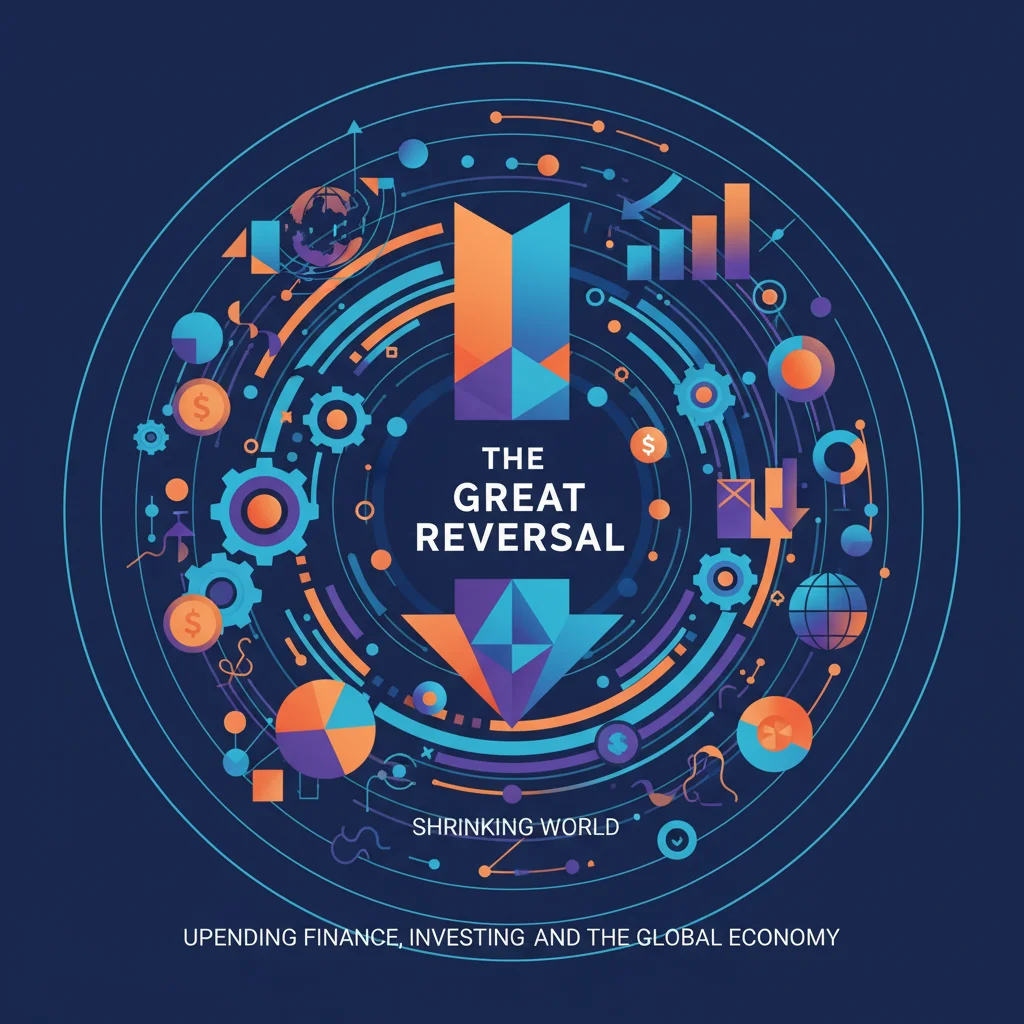
The Great Reversal: How a Shrinking World Will Upend Finance, Investing, and the Global Economy
For the last two centuries, the global economy has operated on a simple, unspoken assumption: growth. More people meant more workers, more consumers, and more innovators. This ever-expanding human footprint has fueled everything from industrial revolutions to the explosive rise of the modern stock market. But what happens when this fundamental engine of progress sputters, stalls, and begins to run in reverse?
We are standing at the precipice of a demographic cliff, a “Great Reversal” that will turn many of our most pressing economic and political challenges completely upside down. The era of unchecked population growth is ending, and the dawning age of depopulation promises a world so different from our own that the financial playbooks of the 20th century will become dangerously obsolete. For investors, business leaders, and anyone involved in finance, understanding this shift isn’t just an academic exercise—it’s a matter of survival.
The End of the Beginning: From Population Boom to Bust
The narrative of human history has been one of exponential growth. This expansion became the bedrock of modern economics, a constant variable in every equation for prosperity. But this long-established trend is set to dramatically reverse. According to United Nations projections, the world’s population is expected to peak at around 10.4 billion in the 2080s and then enter a sustained decline.
This isn’t a distant, abstract future. It’s already happening. In nations like Japan, Italy, and South Korea, populations are actively shrinking. Even the demographic powerhouse, China, saw its population fall for a second consecutive year in 2023. These aren’t isolated incidents; they are the canaries in the global coal mine, signaling a profound transformation of the human landscape.
To understand the scale of this shift, consider the fertility rates—the average number of children born per woman—required to maintain a stable population. This “replacement rate” is approximately 2.1. The table below illustrates how far some of the world’s major economies have fallen below this critical threshold.
| Country/Region | Approximate Fertility Rate (2023) | Status vs. Replacement Rate (2.1) |
|---|---|---|
| South Korea | 0.72 (source) | Critically Below |
| Italy | 1.24 | Significantly Below |
| Japan | 1.26 | Significantly Below |
| China | 1.09 | Critically Below |
| European Union | 1.46 | Significantly Below |
| United States | 1.66 | Below |
This demographic winter will create a world where the elderly outnumber the young, a dynamic that fundamentally rewires social structures and economic priorities.
Flipping the Script: Tomorrow’s Problems Are the Opposite of Today’s
The consequences of this reversal are not just incremental; they are revolutionary. The very problems that dominate our headlines today are likely to be replaced by their polar opposites.
From Inflation to a Deflationary Quagmire
For the past several years, central banks have been waging a relentless war against inflation. In a depopulating world, the primary enemy could become its opposite: deflation. With fewer young people forming households, buying cars, and consuming goods, aggregate demand is set to weaken. An aging population tends to save more and spend less, further dampening economic activity. This creates a persistent downward pressure on prices, a scenario that can be even more destructive than inflation, as it discourages investment and encourages hoarding of cash. The entire strategy of modern banking and monetary policy, built to fight inflation, will need a radical reinvention.
The Trillion-Dollar Bug: How AI and New Financial Models Are Fuelling the War on Superbugs
From Unemployment to Chronic Labor Shortages
For decades, the fear of mass unemployment has shaped policy, from education to trade. In the near future, the biggest challenge for businesses will not be finding jobs for people, but finding people for jobs. As the workforce shrinks, labor will become an increasingly scarce and valuable resource. This could trigger a monumental power shift from capital to labor, potentially reversing decades of rising inequality. While this may sound socially beneficial, it poses a significant threat to corporate profit margins and could stifle the very investment needed for economic dynamism. Sectors from construction to healthcare will face a crippling lack of workers, forcing a desperate race for automation.
From a Housing Crisis to a Property Glut
The mantra of “they’re not making any more land” has fueled real estate booms across the globe. But a shrinking population means a shrinking demand for housing. In parts of Japan, the phenomenon of akiya, or abandoned “ghost” homes, is already a significant problem (source). As generations with fewer children inherit more properties than they need, we could see housing prices stagnate or even enter a permanent decline in many developed nations. The assumption of real estate as a perpetually appreciating asset, a cornerstone of middle-class wealth, could be shattered.
The Investor’s Dilemma: Navigating the New Financial Landscape
For those engaged in investing and trading, this new reality is daunting. The foundational belief that a growing population will always create a larger pool of future buyers to bid up asset prices is about to be tested.
The Stock Market’s Lost Engine
The “great everything bubble” of the past few decades was fueled by a confluence of factors, but demographic tailwinds were a critical, often overlooked, component. A growing workforce and population provided a steady stream of capital into pension funds and 401(k)s, relentlessly pushing up the stock market. When this flow reverses—as retirees begin to outnumber new workers and start selling assets to fund their living expenses—we face a scenario of more sellers than buyers. This could lead to decades of stagnant or declining equity markets, challenging the very notion of passive, long-term index investing that has become gospel.
Rethinking Investment Strategies
Adapting to this environment requires a paradigm shift. Investors may need to pivot from broad market exposure to highly selective strategies. The key will be identifying companies and sectors that can thrive in a shrinking world:
- Automation and Robotics: Companies that provide solutions to labor shortages will be in high demand.
- Healthcare and Biotech: An aging population will require more advanced medical care, pharmaceuticals, and elder-care services.
- Geographic Diversification: Capital will likely flow from aging, stagnant economies to the few regions still experiencing population growth, such as parts of Africa and South Asia.
- Niche Luxury and Services: A smaller, older, and potentially wealthier population (due to inheritance) may spend more on high-value experiences and services rather than mass-market goods.
The Debt Supernova
Perhaps the most terrifying aspect of a shrinking economy is how we will manage the colossal mountains of public and private debt accumulated during the growth era. Servicing debt requires economic growth. Without it, the debt burden becomes increasingly heavy, potentially leading to sovereign defaults, fiscal crises, and a “doom loop” for the banking system. Governments will face an impossible choice between slashing social safety nets for the elderly or imposing crippling taxes on the shrinking workforce.
Innovative solutions, perhaps utilizing blockchain for transparent and efficient government spending or new forms of public-private financing, will be desperately needed. But the fundamental math remains unforgiving: a smaller economic pie makes it harder for everyone to pay their debts.
Beyond the Rhetoric: Decoding the Economic Warfare Between China and Japan
A New World Order
The geopolitical map will also be redrawn. The 21st century may not be defined by the rivalry between the US and China, but by the divergence between a geriatric Global North and a youthful Global South. Countries in Africa, with their booming young populations, could become the new centers of consumption, labor, and innovation, while the aging powers of Europe and East Asia see their global influence wane.
This demographic divergence will reshape supply chains, investment flows, and military power. The world we are entering is not just an older version of the one we know—it’s a fundamentally different planet.
The Great Reversal is no longer a fringe theory; it is a mathematical certainty unfolding before our eyes. The challenges are immense, threatening the stability of our financial systems and the prosperity we’ve come to take for granted. For investors, policymakers, and business leaders, the time to prepare is now. The assumptions that built the modern world are crumbling, and the task ahead is to design new models for a smaller, older, and vastly more complex future.


